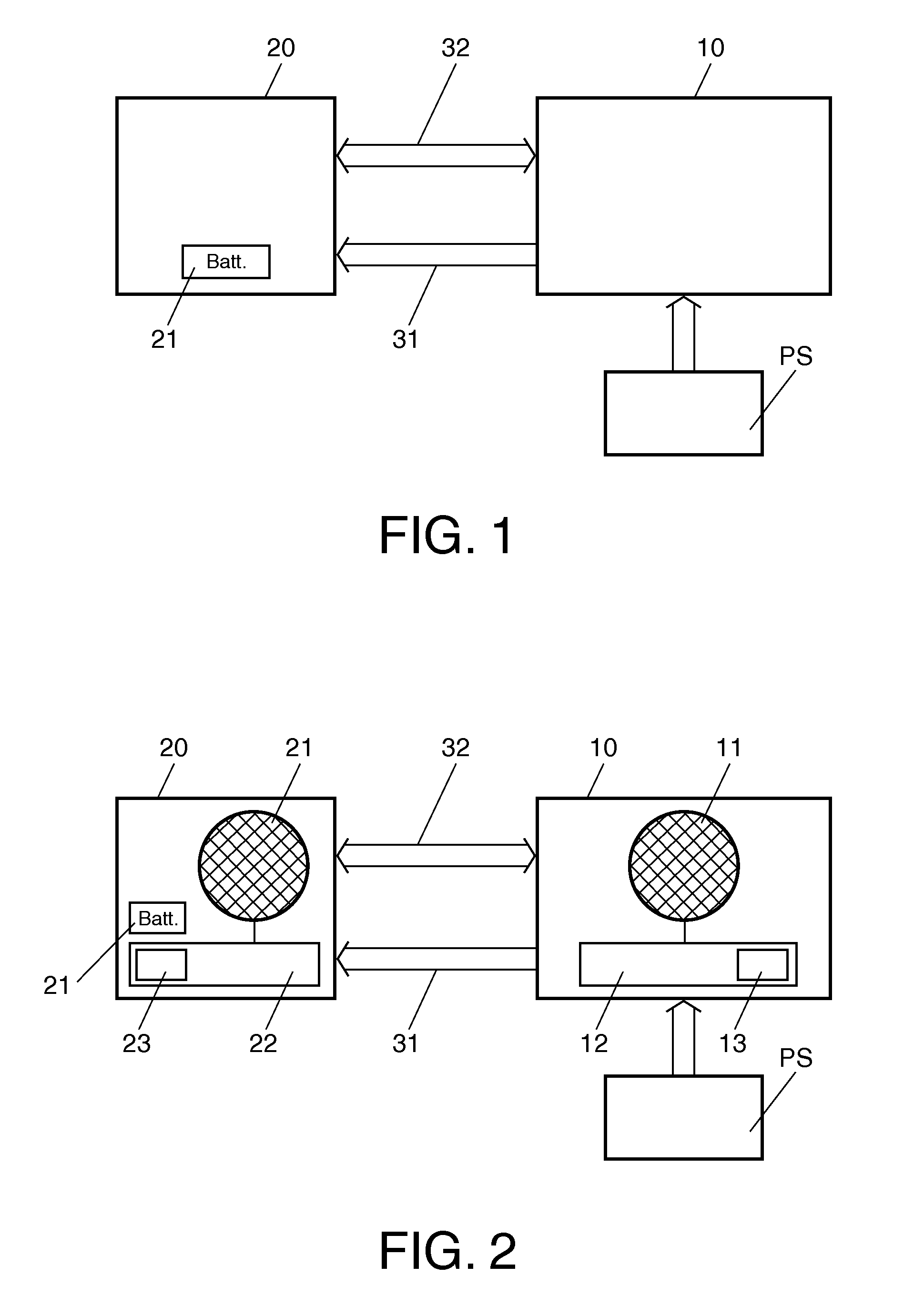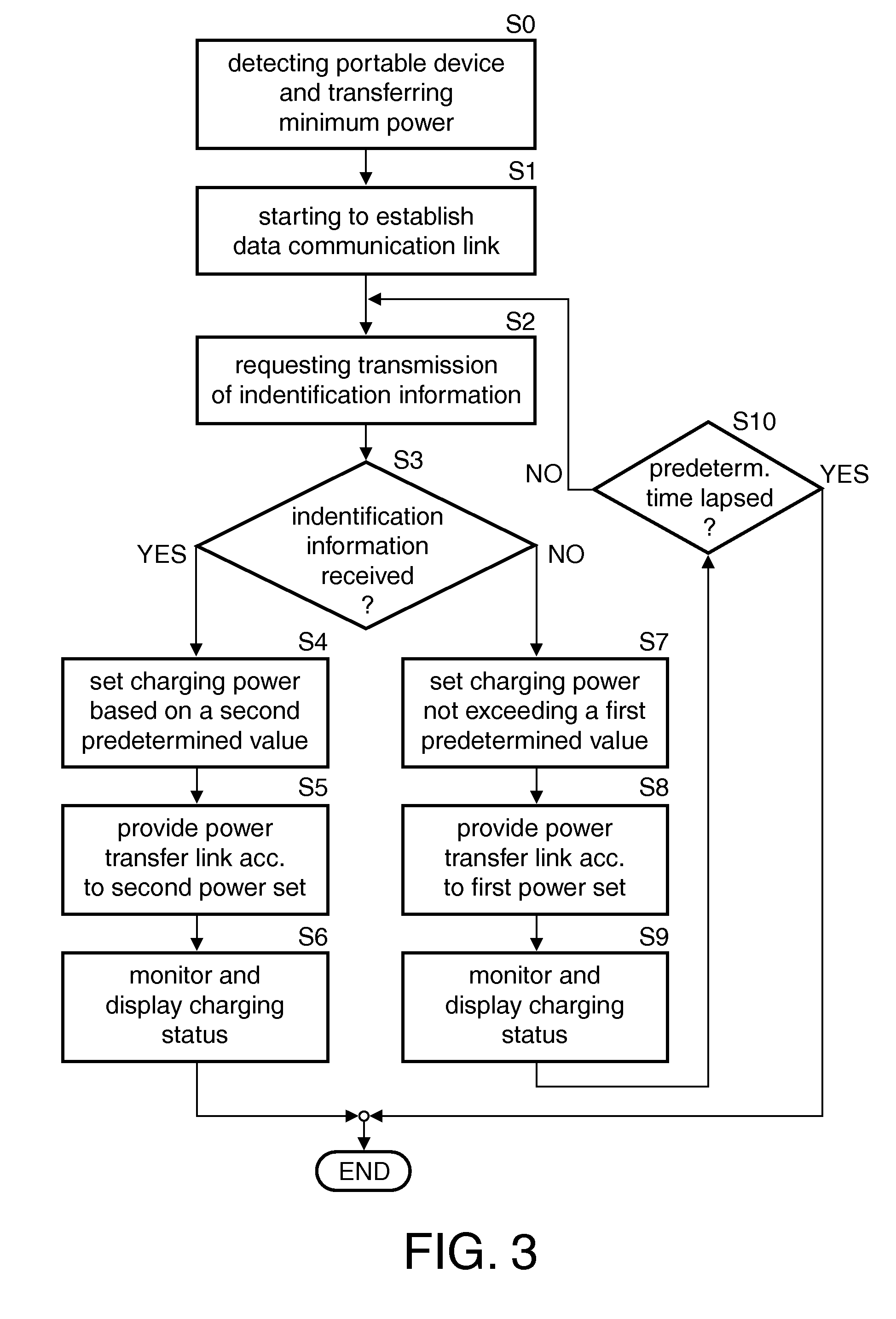Method of controlling a power transfer system and power transfer system
a power transfer system and power transfer technology, applied in the direction of transmission, electric vehicles, transportation and packaging, etc., can solve the problems of flammable gas environment, device use in flammable gas environment, and the cost and inconvenience of regularly having to purchase new (not rechargeable) cells for users, etc., to achieve optimal charging operation
- Summary
- Abstract
- Description
- Claims
- Application Information
AI Technical Summary
Benefits of technology
Problems solved by technology
Method used
Image
Examples
Embodiment Construction
[0030]A first embodiment of the method of controlling the power transfer system as well as of the power transfer system according to the present invention is now described in detail in conjunction with FIGS. 1 to 3.
[0031]FIG. 1 shows the basic arrangement of the power transfer system of the present invention in the form of a schematic diagram in which a power transfer device 10 is provided as a charging device (charging pad) for a portable device 20. The at least one portable device 20 includes a rechargeable battery (rechargeable cell) as the battery power source 21 thereof which is recharged by a power delivered from or transferred by the power transfer device 10. The portable device 20 which includes the battery power source 21 is powered by this rechargeable battery.
[0032]The power transfer device 10 receives from a mains power supply network PS which is usually provided in the form of a public power supply network power for its own operation and for transferring a suitable powe...
PUM
 Login to View More
Login to View More Abstract
Description
Claims
Application Information
 Login to View More
Login to View More - R&D
- Intellectual Property
- Life Sciences
- Materials
- Tech Scout
- Unparalleled Data Quality
- Higher Quality Content
- 60% Fewer Hallucinations
Browse by: Latest US Patents, China's latest patents, Technical Efficacy Thesaurus, Application Domain, Technology Topic, Popular Technical Reports.
© 2025 PatSnap. All rights reserved.Legal|Privacy policy|Modern Slavery Act Transparency Statement|Sitemap|About US| Contact US: help@patsnap.com



